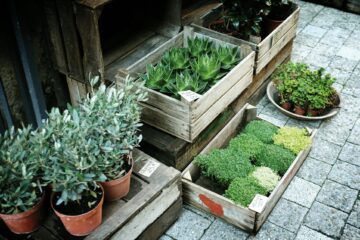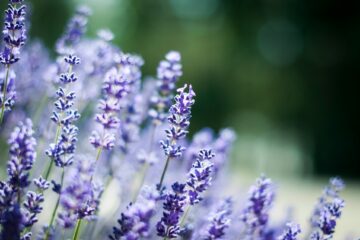Lavender is one of the most popular plants to grow in your garden. The sweet aroma of its flowers fills the air, and its purple colour is beautiful all summer long. Lavender plants are also very easy to take cuttings from, making them ideal for new gardeners who want to try their hand at propagating plants. In this article, we’ll show you how to take cuttings from lavender so that your plant can thrive in your home or yard.
Take lavender cuttings from healthy, vigorous plants.
When you’re ready to take cuttings, be sure to select healthy plants. Cuttings from vigorous plants are more likely to grow and thrive in your garden than those taken from weak or unhealthy plants.
The best time of year for taking cuttings is late summer or early fall–when temperatures are cooler and you’ll have fewer insects around–but if you’re impatient like me, it’s possible to take them at any time of year as long as the plants are growing vigorously (and especially if they’re being watered regularly).
Collect the flowers.
To collect the flowers, you’ll need to pick them when they are in full bloom and not sprayed with pesticides. Lavender flowers tend to last for about two weeks before wilting; if you’re unsure whether or not your lavender is ready for cutting, check the flower bud at its base–if it’s green or brownish-gray in color and hard, then it’s still too early to harvest.
Strip the leaves and flower buds from the lavender cutting.
After you’ve taken your cuttings, strip the leaves and flower buds from the stem. The leaves can be used to make lavender oil, while the buds can be used in cooking or potpourri.
Dry the stems with a paper towel or clean kitchen cloth until they are completely dry.
Now that you have your cuttings, it’s time to get them ready for rooting. First, wipe the stems with a paper towel or clean kitchen cloth until they are completely dry. This is important because if the stems aren’t completely dry, they may mold and die before you can get them in soil.
Second, trim off any leaves that are below where you want to plant your lavender cutting. Cut about 1/4 inch above where there are no more leaves on the stem–this helps prevent rot from happening later on down inside of this area when planted into soil (because if there aren’t any air holes in there already).
Finally: place each cutting into its own small pot filled halfway up with good quality potting mix (like Miracle Gro). Make sure each one has enough room between itself and other plants so they don’t compete with each other for nutrients!
Use sterilised tools to trim each stem to 5-6 inches long.
When you’re ready to take cuttings, use a sharp knife or pruning shears. Make sure all of your tools are clean and sterile, as this will help prevent infection in the new plants.
Make sure you wash your knife with soap and water before using it on lavender–and then rinse with water afterward so that any remaining soap is removed from the blade. Dry off with paper towels if necessary.
Keeping lavender plants healthy is essential if you want them to produce new plants
Lavender is a perennial, which means it will grow back year after year. The plants can be grown indoors or outdoors and are easy to maintain. Lavender makes an excellent choice for beginner gardeners because it’s hardy and drought tolerant, and it has few insect or disease problems.
Lavender is often used as an ornamental plant in gardens where its flowers add delightful colour throughout the growing season. It also makes an attractive container plant that can be brought indoors during winter months, or just want to enjoy its fragrance.
Keep on top of your gardening with our free online journal
Our free online tool allows you to organise your ideas and garden plans and help you be as efficient as possible in the garden.
Sign up now

